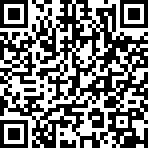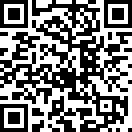 |
Case Report
Unusual and rare manifestations after bronchoscopy: Pneumoperitoneum, pneumoretroperitoneum, and pneumomediastinum—Case report
1 Department of Radiology, Faculty of Medicine, Mohammed VI University of Sciences and Health – UM6SS, Casablanca, Morocco/Cheikh Khalifa International University Hospital, Casablanca, Morocco
Address correspondence to:
Amrani Chaimae
82 AV Mohamed Taib Naciri, Commune de Casablanca, Casablanca, Settat 20270,
Morocco
Message to Corresponding Author
Article ID: 100132Z06AC2025
Access full text article on other devices

Access PDF of article on other devices

How to cite this article
Chaimae A, Samia B, Rayhana CS, Anass AR, Mahamoud CA, Nour AE, Othman A, Amal R. Unusual and rare manifestations after bronchoscopy: Pneumoperitoneum, pneumoretroperitoneum, and pneumomediastinum—Case report. Case Rep Int 2025;14(1):10–15.ABSTRACT
Introduction: Pneumoperitoneum, pneumoretroperitoneum, and pneumomediastinum are rare findings in the absence of visceral perforation or trauma. While often asymptomatic, these conditions can complicate clinical decision-making, particularly when they occur after endoscopic procedures such as bronchoscopy. Typically caused by barotrauma, air leakage in such cases is often explained by the Macklin effect—a phenomenon where air dissects through the interstitial tissues following alveolar rupture. Although flexible bronchoscopy is generally considered a safe procedure, timely recognition of these complications is essential to prevent adverse outcomes. Medical imaging, especially computed tomography (CT), plays a vital role in diagnosing these conditions, evaluating associated complications, and identifying potential underlying causes such as perforation.
Case Report: We report the case of a 17-year-old female patient hospitalized for surgical management of a left pulmonary hydatid cyst. Following a diagnostic bronchoscopy, the patient developed pneumomediastinum, pneumoperitoneum, and pneumoretroperitoneum. Imaging studies were instrumental in the rapid identification of these rare complications. Despite radiological findings suggestive of visceral perforation, further endoscopic evaluations revealed no injury to the esophageal, digestive, or bronchial structures. The patient was admitted to the intensive care unit for close monitoring due to an initially unstable clinical condition. The management was conservative, and the patient’s condition improved progressively. He was discharged without any further complications.
Conclusion: This case highlights the importance of imaging in the diagnosis and monitoring of rare complications following bronchoscopy. Even in the absence of overt visceral injury, clinicians should be aware of these potential presentations to ensure prompt and appropriate management.
Keywords: Bronchoscopy complications, Case report, Pneumomediastinum, Pneumoperitoneum, Pneumoretroperitoneum
SUPPORTING INFORMATION
Author Contributions
Amrani Chaimae - Substantial contributions to conception and design, Acquisition of data, Analysis of data, Interpretation of data, Drafting the article, Revising it critically for important intellectual content, Final approval of the version to be published
Bennani Samia - Substantial contributions to conception and design, Acquisition of data, Analysis of data, Interpretation of data, Drafting the article, Revising it critically for important intellectual content, Final approval of the version to be published
Charif Saibari Rayhana - Substantial contributions to conception and design, Acquisition of data, Analysis of data, Interpretation of data, Drafting the article, Revising it critically for important intellectual content, Final approval of the version to be published
Assakali-Rguig Anass - Substantial contributions to conception and design, Acquisition of data, Analysis of data, Interpretation of data, Drafting the article, Revising it critically for important intellectual content, Final approval of the version to be published
Chirwa Abdillahi Mahamoud - Substantial contributions to conception and design, Acquisition of data, Analysis of data, Interpretation of data, Drafting the article, Revising it critically for important intellectual content, Final approval of the version to be published
Abdoulrazak Egueh Nour - Substantial contributions to conception and design, Acquisition of data, Analysis of data, Interpretation of data, Drafting the article, Revising it critically for important intellectual content, Final approval of the version to be published
Ayouche Othman - Substantial contributions to conception and design, Acquisition of data, Analysis of data, Interpretation of data, Drafting the article, Revising it critically for important intellectual content, Final approval of the version to be published
Rami Amal - Substantial contributions to conception and design, Acquisition of data, Analysis of data, Interpretation of data, Drafting the article, Revising it critically for important intellectual content, Final approval of the version to be published
Guaranter of SubmissionThe corresponding author is the guarantor of submission.
Source of SupportNone
Consent StatementWritten informed consent was obtained from the patient for publication of this article.
Data AvailabilityAll relevant data are within the paper and its Supporting Information files.
Conflict of InterestAuthors declare no conflict of interest.
Copyright© 2025 Amrani Chaimae et al. This article is distributed under the terms of Creative Commons Attribution License which permits unrestricted use, distribution and reproduction in any medium provided the original author(s) and original publisher are properly credited. Please see the copyright policy on the journal website for more information.





